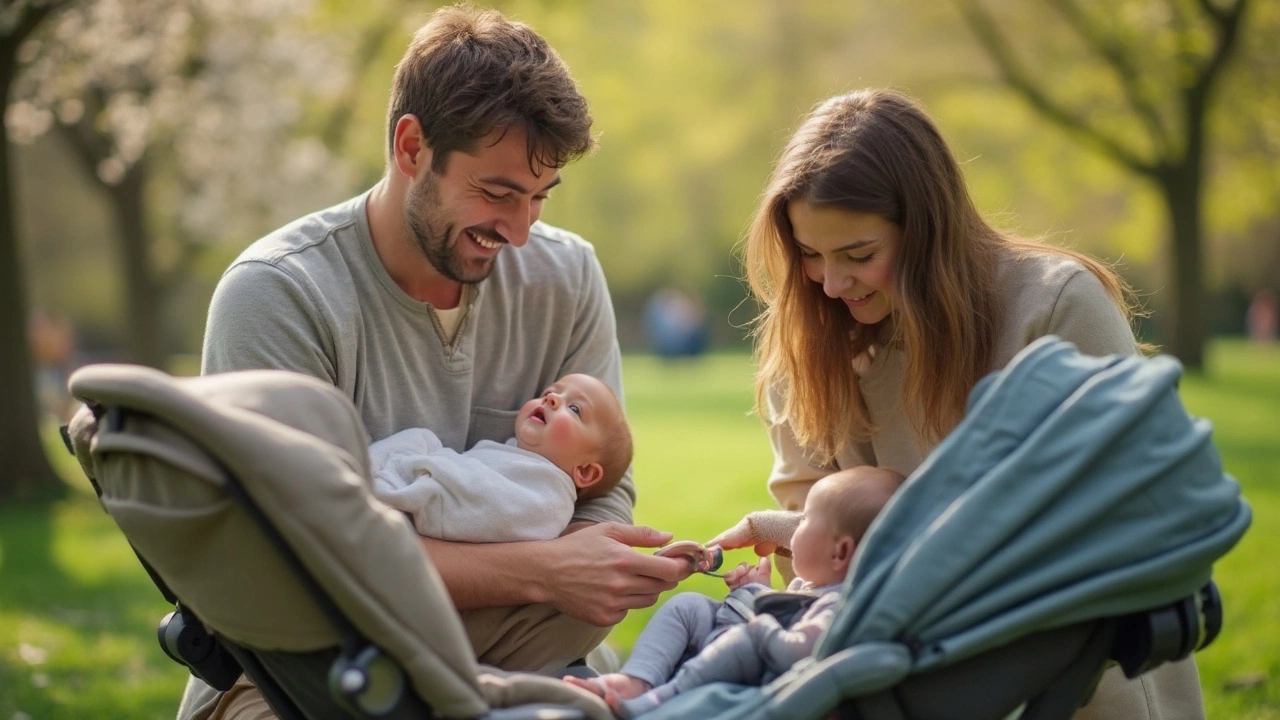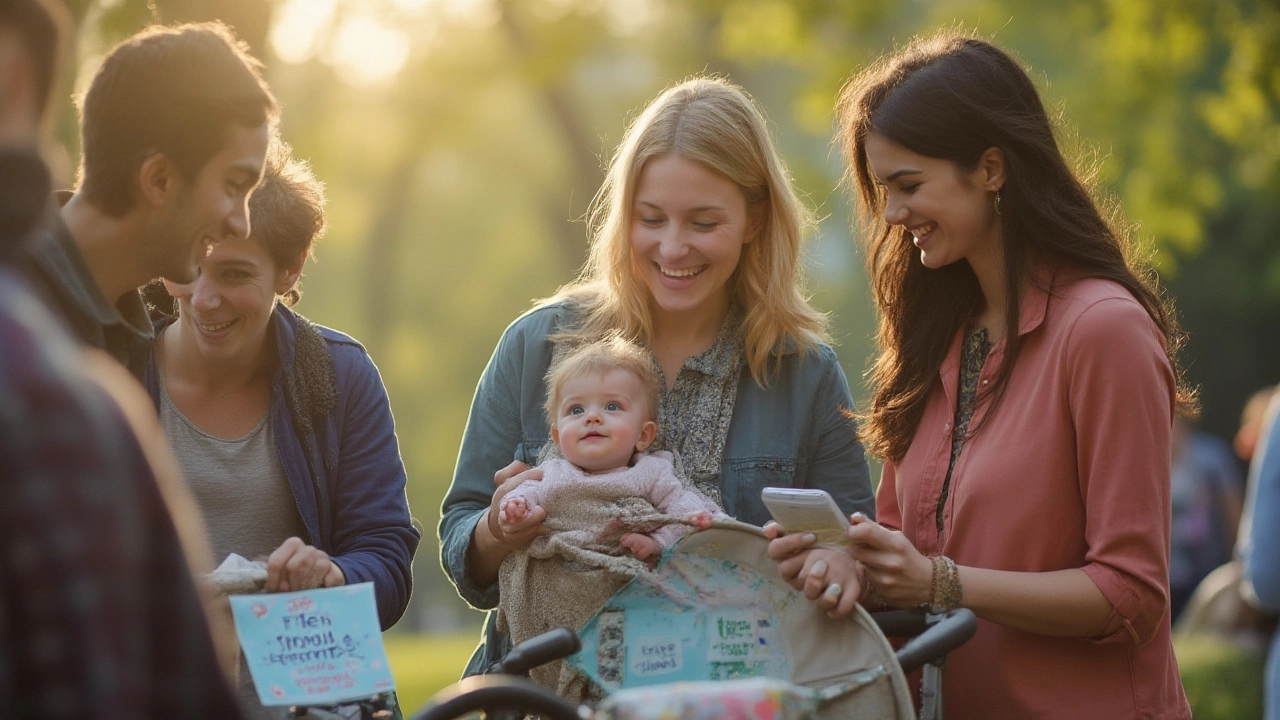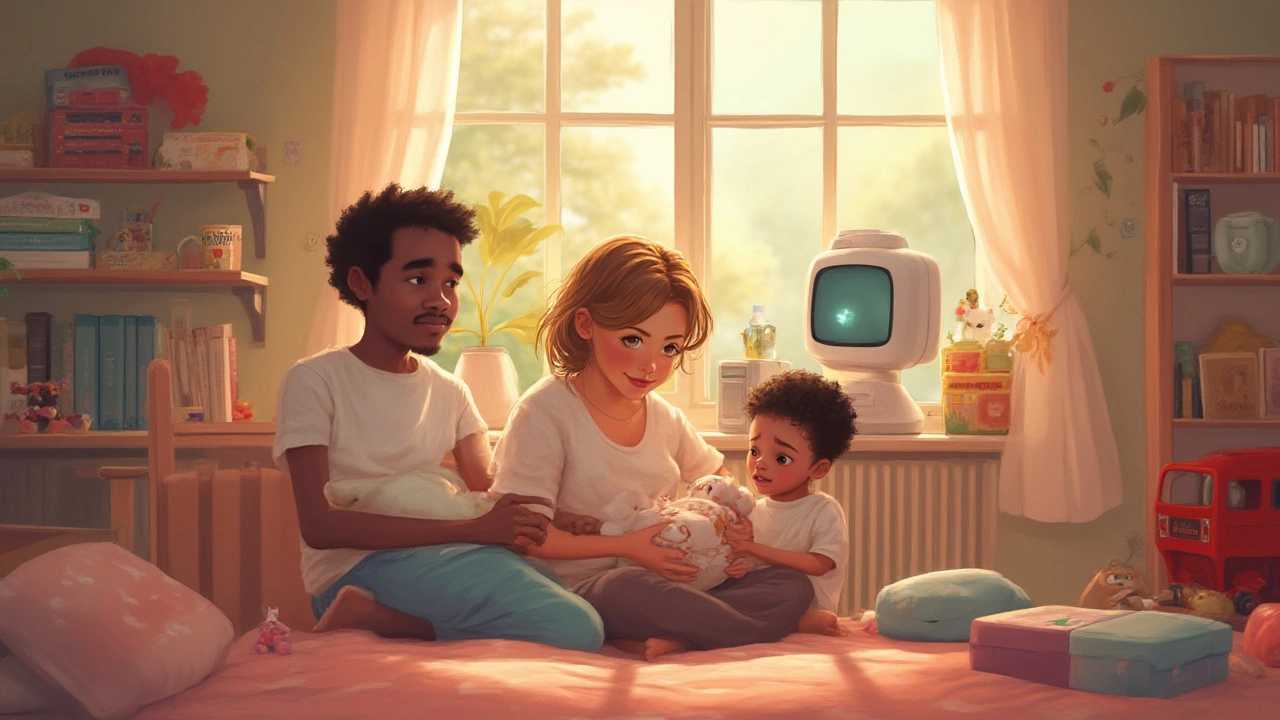What Stroller Should a Newborn Be In? A Parent's Guide to the Safest Ride

If you think any stroller will work for a newborn, that's an easy way to end up frustrated—or even compromise your baby's safety. Newborns can't hold up their heads, so tossing them in a regular stroller just won't do. What you actually need is a stroller that offers full support, especially for that wobbly neck and delicate back.
Look for strollers that either come with a bassinet attachment or have a seat that fully reclines. That flat position is non-negotiable for a brand-new baby. Those popular “umbrella” strollers you see at the park? They’re for bigger kids who can sit on their own, not tiny newborns.
While you browse, always check for safety harnesses—a five-point harness keeps even the squirmiest little ones secure. Make sure the stroller meets local safety standards, too. It's not just about comfort; it's about peace of mind for you every time you step out the door.
- Why Newborns Need Special Strollers
- Features That Matter Most for Newborn Safety
- Types of Strollers Suitable for Newborns
- Choosing Between Travel Systems and Bassinet Strollers
- Common Mistakes to Avoid
- Practical Tips for Stress-Free Outings
Why Newborns Need Special Strollers
Most people don’t realize that newborns and older babies have totally different stroller needs. Right after birth, a baby’s spine is still curving and their head is pretty much like a bobblehead—tons of weight, not much control. That’s why slumping over in a regular upright stroller can actually block their tiny airways. It isn’t about being picky; it’s about health and safety.
The newborn stroller you pick should make sure your baby lies flat or has support that cradles their head, neck, and back. Pediatricians recommend babies ride flat until they can hold up their head on their own. This usually happens around 4-6 months. Using a stroller without proper support puts your baby at a higher risk for stuff like positional asphyxia, which sounds scary—and honestly, it is.
Check out these real numbers:
| Recommended Recline Angle | Age Group | Reason |
|---|---|---|
| Flat (180°) | 0-3 months | Supports breathing and spine |
| 120°-150° (Semi-reclined) | 3-6 months | Some head control, but caution needed |
| Upright (>150°) | 6+ months | Good head/trunk control |
Another thing people miss: newborns need extra shock absorption. All those sidewalk cracks and bumpy park paths? Without good suspension, the vibrations can be way too much. You want wheels and a seat that keep the ride smooth, so your baby isn’t jiggled awake every few seconds.
One more thing: the right stroller keeps your hands free and your stress level down, especially when you’re juggling a diaper bag, your phone, and maybe (if you’re like me) a stray cat carrier. So, picking the correct stroller type is just as much for your comfort as it is for your baby’s development.
Features That Matter Most for Newborn Safety
If you're shopping for a stroller for a tiny baby, safety can't be just a bonus—it's the whole reason you're comparing options in the first place. The newborn stroller you pick needs to check some specific boxes to protect your little one, especially in the early days when they're floppy and fragile.
First, make sure the seat can lie completely flat or has a true bassinet option. Newborns need that flatness for healthy breathing and spine support. Pro tip: some strollers advertise “near-flat” recline, but only a full horizontal position gives your baby's neck the break it needs.
Harnesses matter—a lot. You want a five-point harness, not the basic lap belt. All five points (shoulders, waist, and between the legs) keep even a fidgety baby securely in place and prevent them from slumping sideways or sliding down. Always double-check that the buckles are easy for you but not for little hands as your baby grows.
Pay attention to the stroller’s stability. Wide wheelbase and good weight distribution make a stroller less likely to tip, which is crucial when you're on uneven sidewalks or hopping on public transit. A good brake system is a non-negotiable, too. Test how easily it clicks into place—and stays put, even if Muffin the cat decides to paw at the wheels while you're chatting at the park.
Some families overlook ventilation, but airflow is key in a stroller, especially if you use a car seat or bassinet for newborn naps. Look for mesh panels or peekaboo windows that keep air moving without letting in too much cold or sun.
- Check that all fabrics are soft, machine washable, and free of pesticides or flame retardant chemicals.
- Choose a canopy with strong UV protection; tiny skin burns way easier than adult skin.
- Seek out adjustable handlebars if parents are different heights. Keeping pushes comfortable cuts down on awkward angles, which makes everyone happier on long walks.
The last thing: look for a stroller certified by ASTM, JPMA, or EN safety standards—these are third-party groups that test and confirm a stroller is actually as safe as the company claims.
Types of Strollers Suitable for Newborns
Walking into a baby store can make your head spin with all the stroller choices. But when it comes to newborns, your field narrows a lot, which is honestly a relief. Not every stroller doubles as a newborn stroller. For babies who can’t support their own heads, only a few types make the cut.
Here are the main options:
- Bassinet strollers: These lie completely flat, giving your baby a safe, cozy space, a bit like a rolling crib. Perfect for long naps and totally safe for those wobbly necks. Most European parents swear by bassinets for the first four to six months. These are especially great for city walks and when you want your baby to sleep comfortably outdoors.
- Travel systems: These come with an infant car seat that clicks right onto the stroller frame. This is the ultimate in convenience, especially if your baby tends to conk out in the car. Just move the seat from car to stroller without waking your little one. A travel system can save your sanity on errands and quick trips.
- Convertible strollers: These are built to grow with your child—start flat and then convert as your baby gets bigger. It’s good for families who want just one stroller from day one through toddlerhood. Some even let you attach bassinets, car seats, or regular seats depending on your child’s age and needs.
- Jogging strollers (with infant adapters): Most jogging strollers aren’t newborn-ready straight out of the box, but some let you add an infant car seat adapter. Don’t jog until your baby’s at least six months, but you can stroll on even ground if the setup is safe.
If stats help, here’s a quick look at which stroller types are most common for newborns (based on US buyer trends from 2024):
| Stroller Type | % Newborn Use (First 6 Months) |
|---|---|
| Bassinet Stroller | 38% |
| Travel System | 42% |
| Convertible Stroller | 16% |
| Jogging Stroller (with Adapter) | 4% |
What matters most? The stroller should lie flat or let you attach a proper newborn-safe seat. Don’t settle for anything less since safety isn’t up for debate with newborns. If you're ever unsure, check the manufacturer’s guide—if it doesn’t say “suitable from birth,” keep looking.

Choosing Between Travel Systems and Bassinet Strollers
Let’s break down what actually matters here: both travel systems and bassinet strollers are newborn-friendly, but they’re not created equal. Your daily routine, how much you’re out and about, and how much gear you like to bring along play a big part.
A travel system usually means you get a car seat, a base for the car, and a stroller that clicks the car seat right in. This is super handy for errands—no need to wake your baby to move them from car to stroller. Plus, it saves some money since you’re buying a full set. But here’s the deal: car seats aren’t made for long naps, so they’re not great for extended walks or naps in the park. The American Academy of Pediatrics recommends limiting car seat use to avoid breathing issues in little babies.
Bassinet strollers, on the other hand, give that perfect flat sleeping spot. The bassinet lets your baby lie completely flat, which is safest for sleep and crucial for a developing spine. No scrunching or slumping! If you love long strolls, it’s a no-brainer. Although bassinets are bigger and sometimes bulkier, some new models collapse surprisingly small and even come with breathable panels.
Let’s compare real numbers so you can see how these two stack up:
| Feature | Travel System | Bassinet Stroller |
|---|---|---|
| Flat, safe sleep position | No (semi-reclined in car seat) | Yes |
| Moves baby without waking | Yes | Sometimes (depends if the bassinet detaches) |
| Great for errands and car trips | Yes | Not ideal (usually doesn’t snap into car) |
| Recommended nap length | Max 2 hours in car seat | No restriction in bassinet |
| Generally lighter and more portable | Yes | No |
If I had to pick a single newborn stroller for city errands and groceries with Lucas, I’d go travel system. But for endless walks, outdoor naps, or hanging at the park with my cat Muffin nearby, the bassinet stroller wins, hands down.
People often miss this: some brands now let you build your own hybrid—buy a travel system but add a separate bassinet for long outings. So, it doesn’t have to be all or nothing. Just double check all the pieces actually work together before splurging.
Common Mistakes to Avoid
Stroller shopping for a newborn looks simple—until you spot the fine print. People mess up by grabbing what looks cute or folds up easily, but that doesn't always mean safe or right for a tiny baby. Here are the big mistakes new parents (including me, during a tired 3 a.m. online scroll) usually make:
- Skipping the full recline feature: Newborns can't sit up. If the stroller seat doesn't fully recline, it’s a no-go. Their airways can get pinched if they’re too upright.
- Choosing a stroller marketed for infants without checking age or weight recommendations. Just because it says "infant" doesn’t mean it’s best stroller for newborn-safe. Always double-check those details in the instruction manual or label.
- Using a stroller without a secure five-point harness. A simple strap isn’t enough for wiggly, curious babies.
- Ignoring stroller safety standards—like JPMA certification in the U.S. If a stroller hasn’t been tested for safety, move on.
- Not considering overall stroller weight. Heavier strollers are solid, but they’re awkward in tiny elevators or if you live up a flight of stairs (hello, arm workout you didn’t ask for).
- Assuming car seat attachments fit all strollers. Most brands only work with specific seats, so don’t play stroller roulette.
“Most accidents involving strollers happen because the restraint system wasn’t used or the child fell out headfirst. Always check and recheck your buckles before rolling out.”
— National Safe Kids Campaign
A jaw-dropping stat: According to the Consumer Product Safety Commission, about 17,000 stroller-related injuries were treated in U.S. emergency rooms in a single year. Here’s how some common mistakes break down:
| Mistake | Percent of Cases Involving Injury |
|---|---|
| Lack of Harness Use | 43% |
| Improper Use of Car Seat Attachments | 21% |
| Not Using Full Recline | 16% |
| Other (tipping, recalled models, etc.) | 20% |
Here’s the bottom line—don’t rush stroller shopping. Take five minutes to double-check those features, especially if you’re buying second-hand or grabbing a hand-me-down. A little research means way fewer headaches (and panicked Google searches) later on.
Practical Tips for Stress-Free Outings
Heading out with a newborn always feels like a big deal, but it really doesn't have to be a source of stress. Most parents find it’s all about having a good plan and picking the best stroller for newborn outings. Here’s what actually works, straight from the trenches.
- Pack light, but smart. You don’t need to haul around half the nursery. Focus on the basics: diapers, wipes, one outfit change, a swaddle, and a pacifier. Stash everything in a diaper bag that clips onto your stroller, so your hands stay free.
- Timing is everything. Try to leave right after a feed and diaper change. Newborns tend to nap during walks if their tummies are full, giving you a peaceful window out and about.
- Keep weather in mind. If it’s sunny, attach a stroller sunshade or use a breathable muslin blanket for extra coverage (but never drape anything tightly over the stroller as it can overheat inside fast). For cold days, layer your baby—not the stroller—with light clothing, and add a cozy footmuff if you like.
- Check your wheels on the way out. Seriously, nothing is worse than getting out the door and finding you have a wobbly wheel or a sticky brake. Give your stroller a quick once-over, especially if you usually rush out like I do.
- Plan your route. Not every place is stroller-friendly. Check for sidewalks, ramps, or smooth park paths if you value your sanity. A quick search on Google Maps can save a whole lot of “why did I even leave home?” moments.
- Consider a travel coffee mug. You’d be amazed how much more human you feel with both your baby AND a hot drink. If your stroller has a parent tray, that’s gold—otherwise, get a universal stroller cup holder.
If you’re going out solo, text your route and estimated time to a family member. Even if nothing goes wrong, it’ll calm those new-parent nerves. And when in doubt, double-check that harness. A secure baby is a happy baby.
Try quick, low-pressure outings at first. You’ll figure out what you actually need and lose that anxious feeling as you both get more comfortable rolling out together. Don’t worry about what other parents look like they’re doing—everyone starts somewhere, and you’ve got this.


